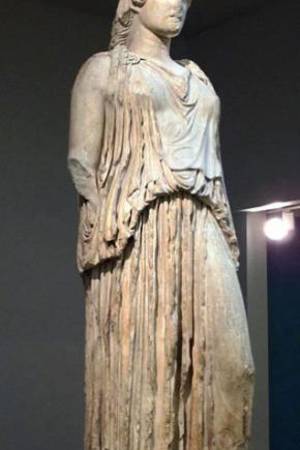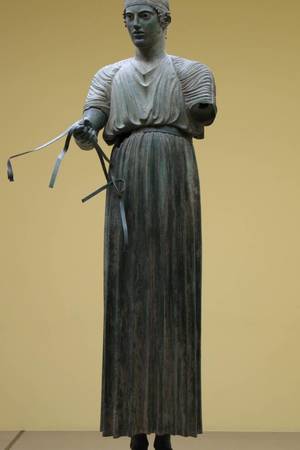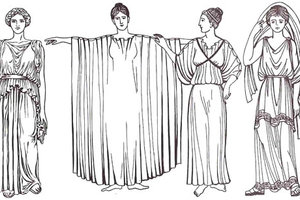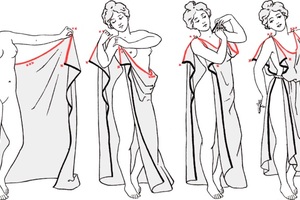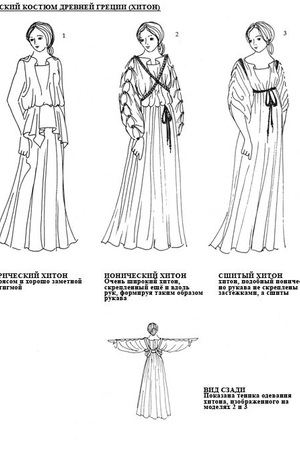Chiton
The himation (Ancient Greek: ἱμάτιον) was a type of outer garment worn by the ancient Greeks. It was a large rectangular piece of woolen or linen fabric that was draped over the shoulders and wrapped around the body. The himation was worn over the chiton, which was the inner garment.
The himation had no sleeves and was typically worn by both men and women. It was a versatile garment that could be worn in different ways depending on the occasion. It could be draped loosely over the body for everyday wear or pulled tightly around the body for more formal occasions. It could also be used as a cloak or shawl to protect against the weather.
In Rome, there existed an equivalent of the Greek chiton, which was worn in the same manner - tunic.
Male Chiton
The male chiton was made from a rectangular piece of fabric, approximately 1 meter wide and about 1.8 meters long. It was folded in half and fastened at the shoulders with fibulae or simply stitched together. To allow for greater freedom of movement during physical activities, the buckle on the right shoulder was unfastened. The lower edge of the chiton was always hemmed (an unhemmed edge was a sign of mourning or slavery). The chiton was always belted, usually with a loose fit. Its length depended on the age and social status of the individual. Most commonly, it reached the knees, but priests and officials during their duties, as well as tragic actors during performances, wore long chitons that extended to the ankles. On the other hand, warriors usually shortened their chitons to the thighs. During work, they would wear a special type of chiton called an exomis, which was a piece of coarse fabric passed under the right arm, also belted and fastened on the left shoulder.
Female Chiton
The female chiton did not differ in construction from the male chiton, but there were significantly more known ways of wearing and belting it. The belt often emphasized not only the waist but also the breasts. Female chitons were usually longer and wider than male chitons, allowing for a greater variety of draping.
Exomis
The exomis, also known as exomis (Ancient Greek: ἐξωμίς, from exo - outside, omos - shoulder), was a piece of coarse fabric (such as leather or animal hide) in Ancient Greece. It was fastened on the left shoulder and measured approximately 2.3 by 1.40 meters. It can be considered a subtype of the chiton. The exomis was secured at the waist with a belt and tied on the left shoulder with a knot, strap, fibula, or clasp. The size and texture of the fabric reflected the wearer's status: rough fabric without pleats and with an uneven or frayed hem indicated a slave, while larger fabric with simple folds indicated a free person or warrior. A cloak or animal skin could be worn over it. The shorter exomis (above the knee) was sometimes used as a hip wrap.
Related topics
Ancient Greece, Hoplite, Tunic
Literature
- Bieber M. Griechische Kleidung. Berlin, 1928;
- Bieber M. Entwicklungsgeschichte der griechischen Tracht. 2. Aufl. Berlin, 1967;
- Pekridou-Gorecki A. Mode im antiken Griechenland: Textile Fertigung und Kleidung. Munich, 1989;
- Women’s Dress in the Ancient Greek World / Ed. by L. Llewellyn-Jones. London, 2002;
- The Clothed Body in the Ancient World / Ed. by L. Cleland et al. Oxford, 2005;
- Lee M. M. Body, Dress, and Identity in Ancient Greece. Cambridge, 2015.

 Gallery
Gallery






